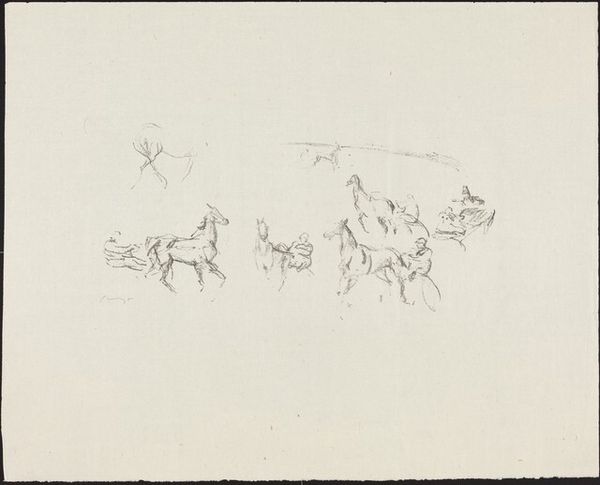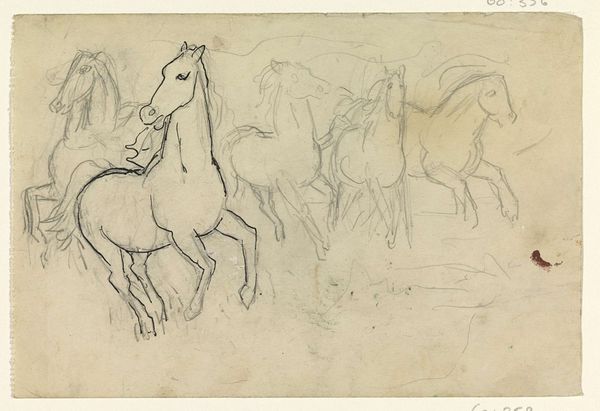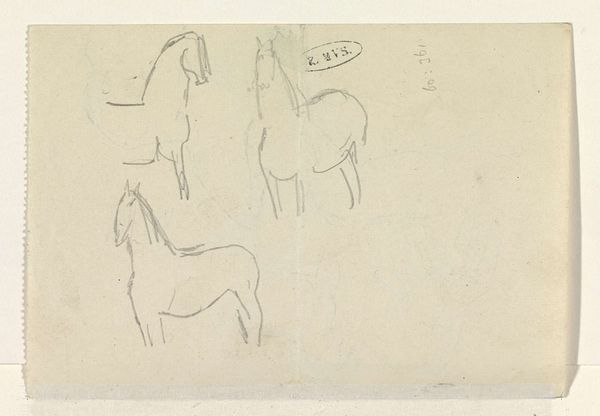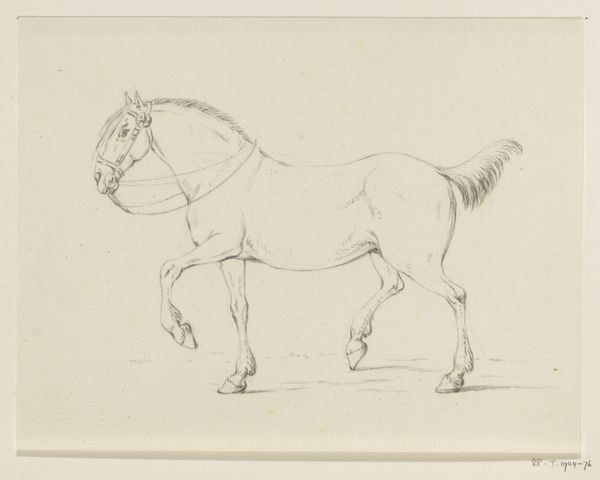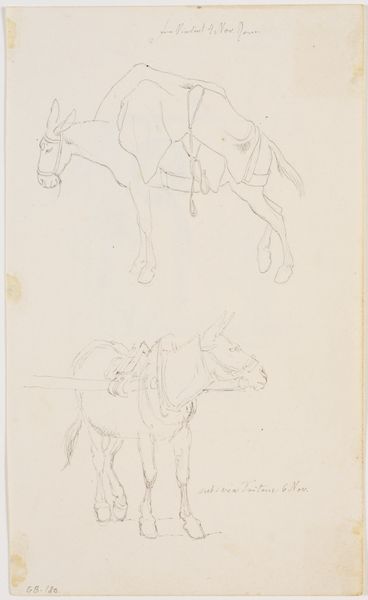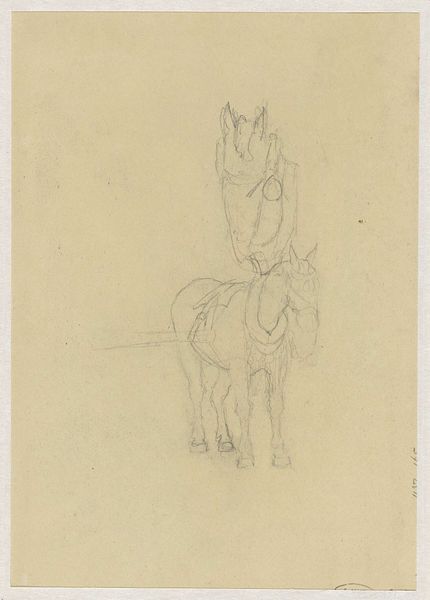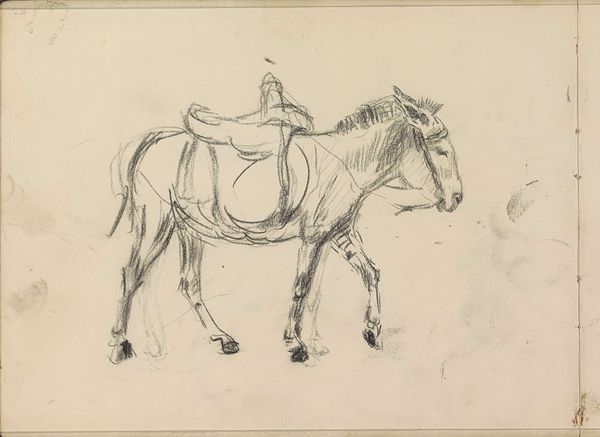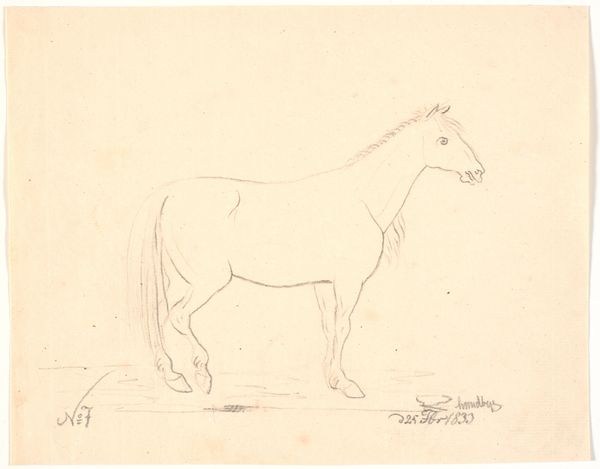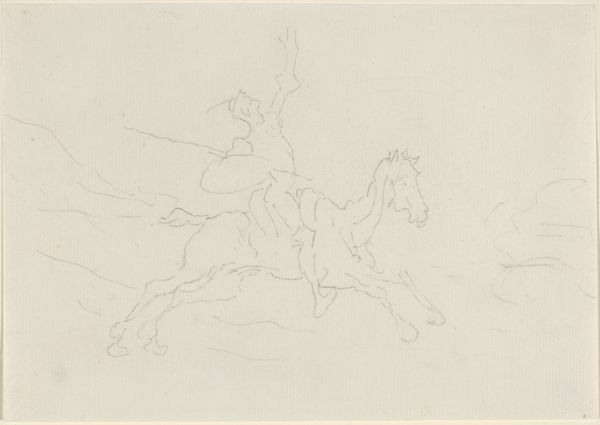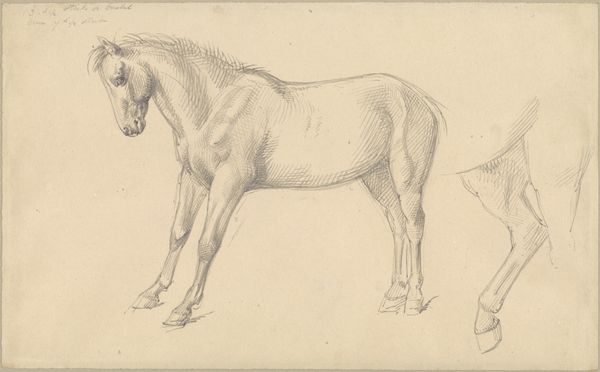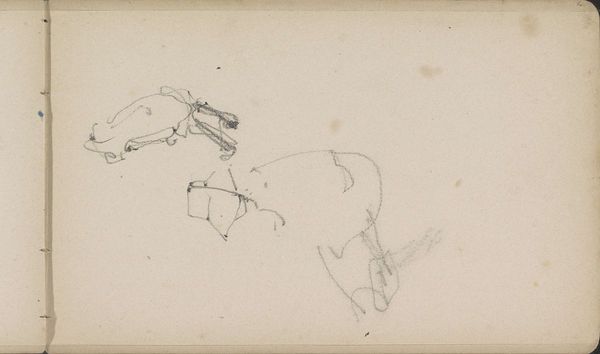
drawing, print, ink
#
drawing
#
ink drawing
# print
#
impressionism
#
landscape
#
ink
Copyright: National Gallery of Art: CC0 1.0
Curator: Today, we're looking at Max Slevogt's "Trabrennen I," rendered in ink. It looks to be from early in his career, judging by the somewhat tentative linework. What’s your initial take on this? Editor: There's an immediate sense of movement, even speed. The ink seems hastily applied, yet it effectively conveys the energy of the trotting horses. It feels almost ephemeral. Curator: The sketch-like quality is fascinating. Slevogt seems to be capturing not just the form of the horses and driver but also the very act of racing, perhaps speaking to human-animal relationships bound in competitive spaces and power structures of its day? Editor: I agree, there's also something compelling about the way the ink defines shape with minimal marks. It seems almost an exercise in depicting raw energy and sinewy muscle in motion. Curator: What I also see is a challenge to conventional sporting images. Unlike those portrayals emphasizing spectacle, grandeur or celebratory triumph, this shows us something far less defined – a brief, almost abstract observation. Slevogt here resists romanticizing horse racing. It raises important questions about labour, class, and entertainment within burgeoning modern economies. Editor: I appreciate how you position this within broader narratives, especially concerning class and labour, reminding me of Degas’ interest in labour and entertainment; however, I see Slevogt focused more simply on materialising a specific kind of animal movement—in other words, to depict horses, whose racing industries demand and value material endurance. It seems the application of medium to communicate motion might actually define its core intention! Curator: Fair enough. I suppose in some ways we’re both agreeing that at stake in "Trabrennen I" is something that transcends literal depiction. Slevogt's ink drawing reveals something fundamental about what happens when human and animal industries overlap. Editor: Precisely. What resonates with me after considering the labor of making, and of horse racing, is an interest in the pure, unadulterated sense of forward motion captured with simple tools.
Comments
No comments
Be the first to comment and join the conversation on the ultimate creative platform.
